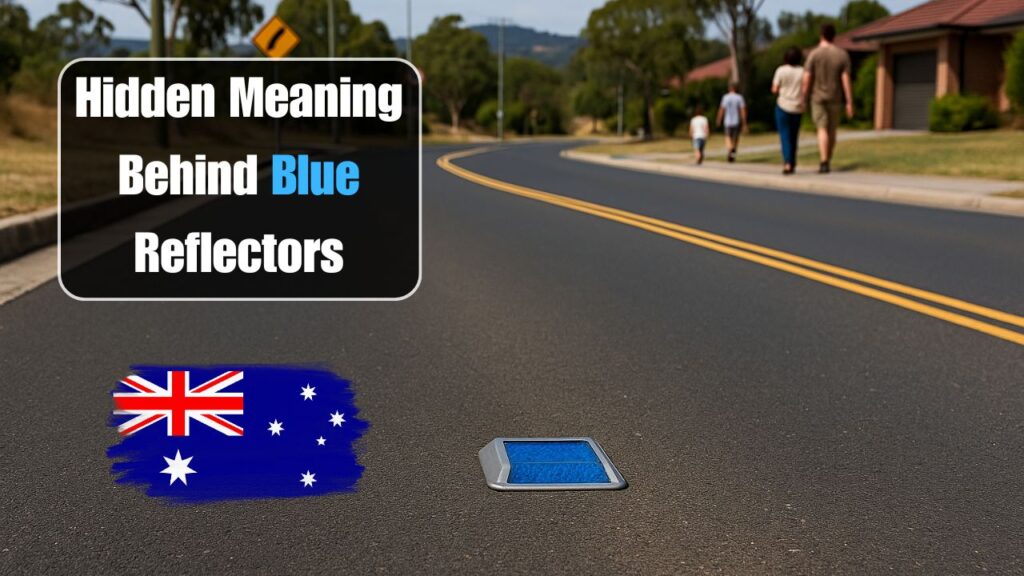Australia’s roads are full of small details that many drivers miss — and one of the most useful is the blue road reflectors. These little studs aren’t decorative: they carry a hidden meaning that helps manage traffic flow and safety, especially on dark or wet nights. If you drive regularly in Australia, understanding these reflectors can improve your awareness and reactions on highways and suburban streets. In short, learning the signals behind the reflectors can make journeys safer for everyone.

What do blue reflectors indicate on Australian roads?
Blue studs are typically used as a clear sign for median separation or to mark areas associated with emergency or service access. In many Australian jurisdictions, a blue reflector often identifies the edge of areas reserved for emergency services or marks the location of fixed infrastructure such as fire hydrants and lane delineation near intersections. For drivers, these studs are less common than white or yellow markers, but they are intentionally placed to improve night driving safety and to help authorities quickly locate key roadside features after dark.
Where are blue reflectors placed and who sets the rules?
Placement of any road marker in Australia is governed by state-level road authorities working with national guidelines. Typically, a traffic authority — such as a state roads department — will publish the road guidelines for reflector type, spacing, and placement. Local councils may also approve or install reflectors for municipal streets, footpaths, and service corridors, which is why you might see slight variations from one area to another. If you spot unusually placed blue studs, they were likely installed after consultation between the state body and local councils.
How should drivers respond when they see blue reflectors?
When you notice blue reflectors while driving, the safest reaction is to be prepared to reduce speed and to scan for nearby hazards or access points. Blue studs can indicate proximity to emergency access points or service bays, so it’s wise to increase caution and watch for stopped vehicles or equipment near the road. In some situations, you may need to move over slightly if personnel or vehicles are using the shoulder — always check mirrors and ensure it’s safe before changing position, particularly on busy Australian highways with narrow shoulder lanes.
Maintenance, reporting and who to contact if a reflector is damaged
Damaged or missing reflectors reduce safety — so reporting them helps everyone. Most states assign maintenance crews (or contractors) to periodically inspect reflectors and replace worn studs. If you find a broken or missing blue reflector, you can usually report faults via the state roads website or the council’s online portal, which allows you to give a location, upload photos, and request follow-up. Prompt reporting ensures that emergency access points and safety markers remain reliable for all road users in Australia.
| Reflector Colour | Common Meaning in Australia | Typical Placement | Driver Action |
|---|---|---|---|
| Blue | Emergency access / service marker | Near hydrants, service bays, or median features | Slow down; be alert for stopped vehicles |
| White | Centreline or lane divider | Between lanes and on centrelines | Stay within lane |
| Yellow | Median or no-passing zones | Along median strips | Do not overtake |
| Red | Road edge or hazard marker | Road edges, barriers | Avoid edge; reduce speed |
FAQ: What does a blue reflector mean?
A blue reflector locations mark emergency or service access points and help responders find key infrastructure quickly.
FAQ: Are blue reflectors legal markers or decorative?
Blue studs are part of official road marking systems and are not parking restrictions or decorative — they signal functional access or hazards.
FAQ: Do reflectors still work in heavy rain?
Reflective studs remain visible in wet weather but can have reduced visibility if covered — watch for visibility issues and slow down in bad conditions.
FAQ: How can I report a missing reflector?
Use the local roads community hotline or the council’s email report form to submit a maintenance request with the exact location and photos.




